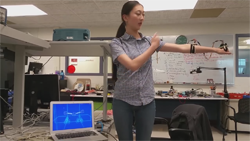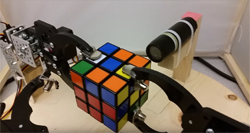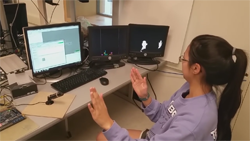ECE 5760 Contents
Syllabus and Course Details
Lecture Notes and Handouts
Projects and Labs
Note: Homework and Exams are not available for this course.
Labs
Note: Lab solutions are not available for this course.
- Lab 1: Cellular automaton on HPS and VGA [PDF]
- Lab 2: Hardware ODE solver with HPS control [PDF]
- Lab 3: Multiprocessor PDE realtime synthesis of a nonlinear drum [PDF]
- Lab 4: Mandelbrot Set [PDF]
- Lab 5: Final Project [PDF]
Example Project Videos
Past FPGA/Verilog student projects from Lab 5 can be found here.
- LED 64×64 matrix audio visualizer
- Hardware ODE solver and ARM9 controller
- Rubik’s cube solver on FPGA
- Mandelbrot FFT color animation and zoom
- FPGA rock/paper/scissors
- Real time video anonymizer
- Table Tennis Tracker
- Bruce in a Box
- Augmented Reality Ball Game
- Upper body motion tracker
- Falling sand automaton on FPGA
- Real-time cartoonifier on FPGA
- Virtual paint on FPGA



